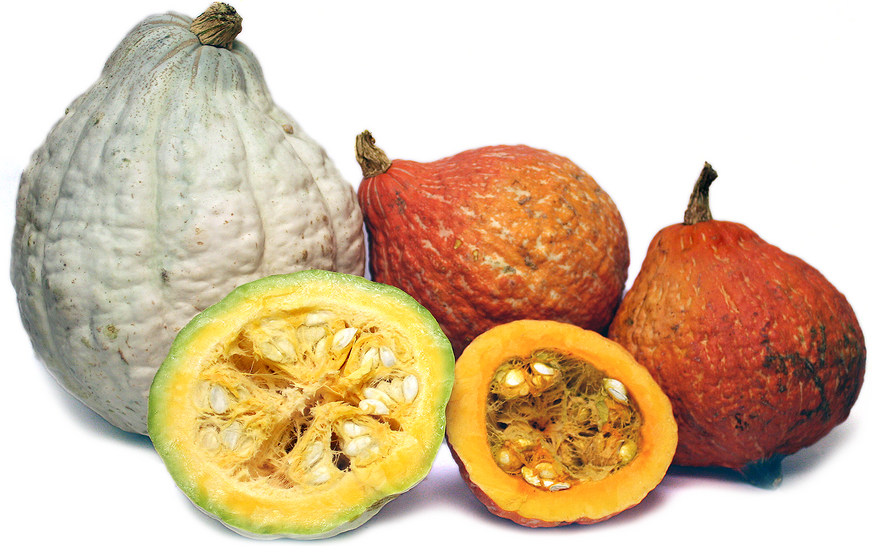


Hubbard Squash
Estimated Inventory, lb : 0
Description/Taste
Hubbard squash is wrapped in a very hard, bumpy skin ranging anywhere from a dark bronze-green to pale bluish-green to a light golden or orange in color. Inside this winter variety's seriously tough skin is a tender, golden yellow, fine grained, rather dry and mealy, dense flesh that offers a rich flavor. Hubbard squash can weigh anywhere from five to fifteen pounds and are most often marketed in cut pieces.
Seasons/Availability
Orange and Blue Hubbard squash varieties are available fall into mid-winter.
Current Facts
Hubbard squash, botanically classified as Cucurbita maxima, is also known as green pumpkin and buttercup squash. The Hubbard squash can grow from a weight of 15 pounds up to a staggering 50 pounds. The Hubbard squash's shell is one of the most difficult to process, creating a demand for precut portions in retail stores. The Hubbard squash is thought to be named for Elizabeth Hubbard, who shared the squashes seeds with her friend, James J. H. Gregory, who introduced it to market.
Nutritional Value
All squashes provide vitamin A and vitamin C, some of the B vitamins, iron and are a good source of riboflavin and dietary fiber. Deep-colored squashes have the most beta carotene. About 100 calories are in one cup of cooked squash.
Applications
Difficult to peel and cube because of its rigid exterior, Hubbard squash is most often cooked in its skin. Carefully halve Hubbard squash, if they are purchased whole, remove seeds and roast, cut-side down, until tender when pierced with fork. Prepare the same way if purchasing pre-cut sections. Scoop cooked flesh from the skin and puree into soup or stew. Cooked squash can also be mixed with wild rice or whole grains and baked into casseroles. For a sweet preparation, mix pureed squash with cream, sugar, eggs, spices and bake into pie. To store whole squash, keep in a dry cool area. Refrigerate plastic-wrapped cut pieces up to five days.
Ethnic/Cultural Info
Fond of squash for centuries in America, this vegetable has become a traditional fall and winter dish with its warm, soothing, comforting, delicious flavor.
Geography/History
The original variety of Hubbard squash is native to South America. The Hubbard squash is thought to have been grown in New England since the 1830's and sold commercially since 1909.
Recipe Ideas
Recipes that include Hubbard Squash. One




